When our dogs are small and spry, getting in and out of the car presents no problems. They bounce in and out like jumping beans. Then time starts to age joints and bones. Maybe surgeries happen, enforcing restrictions on activity. That simple act of getting into the car turns into more of a chore. Dog ramps ease the strain on your dog’s body – and yours!
Dog Mobility
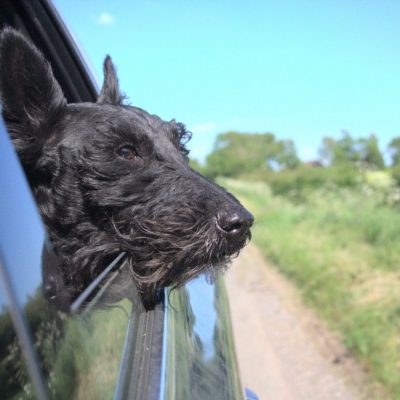
Puppies have boundless energy. Even the calmest breeds go through an early phase where they enjoy spurts of activity and play. They view car trips as adventures and leap into the backseat without assistance. (Okay, clumsy puppy coordination requires a little aid) You may need to teach them where to safely enter the car, but they gain the knack without too much trouble.
Unhappily, that excitement tempers over time. Osteoarthritis moves into your dog’s joints. You notice them moving slower, especially when it comes to stairs and jumping. You can help by providing glucosamine supplements and dog beds designed with memory foam or orthopedic cushions.
But what about those favorite car trips? That once-easy hop into the backseat turns into scaling Mount Everest.
Dog ramps allow your dog to safely enter the car without adding extra strain to their legs or back. It also prevents YOU from injuring yourself.
Human Consideration
You’re doing everything you can for your dog. If your dog’s undergone surgery, they’re not supposed to undertake an unnecessary activity. Jumping – even from the ground to the car – tops that list. Orthopedic procedures are incredibly delicate. You want your dog to heal appropriately. It’s tempting to carry your dog as much as possible and baby them.
If you have a tiny dog weighing less than ten pounds, it sounds simple. Think of how far you have to bend, though. Your cute little pup doesn’t weigh a lot, but you’re going to bend constantly. You’ll work your legs, arms, and back more than the most strenuous HIIT workout. A dog ramp can lessen that work – at least for car rides.
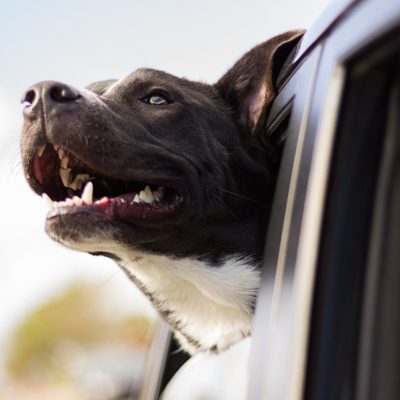
Hopefully, you won’t consider lifting your hundred-plus pound dog into the car. Our backs and legs are NOT designed to support that kind of weight. You love your dog – no one doubts that. But you need to care for yourself just as much. Dog ramps demonstrate your devotion without risking a hernia or spinal damage.
Considerations for Dog Ramps
Dog ramps sound simple: an incline that allows your dog to walk from the ground to the car’s back seat or cargo area. You might consider making your own to save on expenses. However, you need to look at many different characteristics unique to dog ramps if you want to keep you and your dog as safe as possible.
Materials
It sounds contrary, but you need a dog ramp that’s strong and light all at once. The material needs to support your dog’s weight, but you also need to lift it – WITHOUT hurting yourself.
You also need to balance a need for a material that provides a non-slip surface for your dog that’s easy for you to clean. It’s a careful game of finding those “just right” materials that satisfy everyone’s needs.
Measurements
Not every ramp works for everyone. If a ramp’s too short, it defeats the purpose (you don’t want your dog to make a hop at the end). If your dog ramp ends up too long, you may struggle with storing it in the car. You need to know those precise lengths.
We’re not done yet, though. How wide is the dog ramp? You DON’T want your dog to slide off. Compounding an injury on top of their mobility issues won’t help. Nor will you rushing to catch them.
Finally, you need to figure out the best angle for the dog ramp. Think of you’re settings on a treadmill. The higher it goes, the harder you have to work. A slope of around 18-20 degrees is gentle enough for most dogs to navigate safely. This means you need to find the appropriate length to provide that angle and still reach your car. (Yeah – lots of math goes into buying a dog ramp)
Extras
If your dog struggles with the incline. Finding dog ramps with horizontal slats provides an extra grip during the climb. Think of them as rungs on a ladder. They work in addition to the non-slip material to reassure your dog they’re safe.
For you, make sure the dog ramp anchors with non-slip feet. You don’t want it to slide while you’re trying to get the ramp in place. It’ll also ensure everything stays anchored while your dog’s climbing the ramp. Safety’s critical with dog ramps.
Training Your Dog on a Dog Ramp
Dog ramps don’t come naturally to our canine companions. They look different from stairs, and they’re a new accessory attached to the car. You can help your dog learn to use the ramp with some careful training.
- Place the ramp FLAT on the ground. Let your dog sniff and explore this new object. Make sure you give them a treat each time they approach it.
- Encourage your dog to walk across the ramp. Praise them and give them a treat.
- Repeat this several times. Use your hand signal or a chosen word to encourage them to cross the ramp each time.
- Using a STURDY object (such as your porch stairs), raise the ramp slightly. Repeat the process. Make sure your dog’s comfortable each time. You don’t want them to jump off the side.
- Continue raising the ramp until you can attach it to the car.
Best Dog Ramps
If you’ve experienced orthopedic surgery or even repeatedly tried jumping on and off a raised surface, you know your joints start protesting. Our dogs feel the same way. They don’t want to miss out on the adventures, though. Dog ramps allow them to continue to participate without adding stress to their joints or back. It’s the safest way for them to enter and exit the car. And it prevents YOU from straining something attempting to lift your favorite four-legged friend into the backseat.
Best Foldable Dog Ramps
When you want flexibility, foldable dog ramps provide the answer. These telescoping ramps extend to the desired length you need. You can use them for the backseat or the cargo area. They collapse down for easy storage, and they won’t strain your back during set-up or lifting. It’s the perfect answer for dogs of every size.
PetSafe offers a dog ramp for people with shorter cars. This bi-fold ramp reaches a height of 24 inches and folds down for simple storage. The entire ramp weighs 10 pounds (for you), but it can support up to 150 pounds without a problem. A grainy, sandpaper-like texture offers a firm grip for your dog, and the sides have raised edges for added protection.
Downsides? Take your measurements carefully – those 24 inches won’t reach taller vehicles. The angle is a little on the steep side, too. However, if you have a smaller car, it’ll work. Also, some dogs ended up with scratched paws from that textured ramp. Keep an eye on your dog’s feet.
The Good
- Weighs 10 pounds
- Supports 150 pounds
- Sandpaper-like texture and raised edges
The Bad
- 24-inch height won't reach taller vehicles
- Steep angle
- Gritty texture can scratch paws
Say you have a larger vehicle. PetSafe offers a longer option in their Telescoping dog ramp. It stretches up to 87 inches! It weighs a little more as a result (18 pounds), but it can also support up to 300 pounds! (That should cover pretty much EVERY breed of dog) You get the same non-slip grip and raised sides to keep your dog safe.
The downsides? The dog ramp folds up, but the extra length can make it a challenge to store. Watch your measurements carefully to make sure it fits in your car. And people saw the same problem with their dog’s feet, so make sure you’re checking your dog’s paws.
The Good
- Stretches 87 inches
- Weighs 18 pounds
- Supports 300 pounds
The Bad
- Extra-long length may present storage challenges
- Gritty texture can scratch paws
Are you worried about keeping your dog’s paws comfortable? PetGear uses SuperTraX tread (similar to AstroTurf) as the non-slip grip on their dog ramp. It keeps your dog’s feet safe without irritating their skin. You can choose from various sizes (bi-fold AND tri-fold) to suit your car – make sure to properly take your measurements. The largest ramp holds up to 200 pounds. Each folds down and comes with a carrying handle to make things easier on you.
So what are the downsides? There are no outer raised edges, and the plastic can get slippery in wet conditions. Try to walk beside your dog so they don’t slide off the sides. Also, this is one of the narrower dog ramps. If your dog’s on the wider side, you may want to skip it.
The Good
- Available in bi-fold and tri-fold lengths
- Supports 200 pounds
- SuperTrax tread gentle on paws
The Bad
- No raised edges
- Plastic gets slippery when wet
- One of the narrower dog ramps
Are you concerned about lifting and carrying your dog ramp? Come clean-up time, the SuperTrax lifts right off and lets you freshen up your dog ramp. PetGear’s Travel Lite weighs the least of any option – just seven pounds! You still get that comfy SuperTraX to the edges, with the bonus of raised edges for security. You can choose from bi-fold and tri-fold options, and the tri-fold even comes with an extra-wide size if you need it.
Downsides? Some people ended up with manufacturer defects in their shipments. Check your order before you use it. (PetGear’s remarkable about replacements) But those slippery issues on the SuperTraX still come up. Be careful in the rain.
The Good
- Weighs 7 pounds
- Available in bi-fold, tri-fold, and extra-wide options
- SuperTrax tread gentle on paws
The Bad
- No raised edges
- Plastic gets slippery when wet
You liked the look of PetGear’s previous dog ramp, but you were concerned about the narrow dimensions. Good thing they made a Tri-Fold option with an extra-wide surface. You get the same SuperTraX anti-slip surface, but it extends to the edges. The ramp holds up to 200 pounds without a problem. Collapsed down, it weighs 25 pounds, and it’ll tuck right into your car.
The downsides? It’s one of the heaviest dog ramps out there. Make sure you lift with your knees. And when wet, the textured grip got a little slippery. Again, walk beside your dog the entire time for extra security.
The Good
- Extra-wide dog ramp
- Supports 200 pounds
- SuperTrax tread gentle on paws
The Bad
- Weighs 25 pounds
- No raised edges
- Plastic gets slippery when wet
PetStep offers a dog ramp that folds out to a length of 70 inches. The gentle incline prevents your dog from hiking into the car, and the raised slats offer assistance in their walk. You don’t have to worry about scratchy materials on their paws, but you DO get the raised sides for extra safety. When collapsed down, the dog ramp weighs 18.5 pounds, but it’s sturdy enough to support a whopping 500 pounds!
So what are the downsides? This is one of the pricier dog ramps out there. And while there are non-slip rubber anchors, it lacks a strap for attaching the ramp to the car. You may want to rig your own for extra security.
The Good
- Weighs 18.5 pounds
- Supports 500 pounds
- Raised edges and slats
The Bad
- Expensive
- No anchor strap for the car
Best Free-Standing Dog Ramps
For people looking for a simple option, free-standing dog ramps work well. They allow your dog to walk directly into the back seat with minimal fuss. They’re lightweight options that offer support even for larger breeds. You’ll need to dedicate more storage space in the car than foldable dog ramps, but set-up takes no time at all.
Yes, PetGear makes a lot of appearances here on this list. Their Free-Standing Ramp lets you set up the ramp wherever you need. It’ll support up to 200 pounds easily. The SuperTraX material is pressure-sensitive, adapting to each footstep your dog takes. Raised sides offer an extra sense of protection. When you finish, it folds down and weighs 15 pounds.
Downsides? This ramp only comes in one length – 56 inches. That can create a steep angle for many dogs, especially since you can’t change it. And it may or may not work for every vehicle (again – you’re stuck with one height). Take measurements carefully.
The Good
- Weighs 15 pounds
- Supports 200 pounds
- SuperTrax tread gentle on paws
- Raised edges
The Bad
- Only availabe in 56-inch length
- Can't adjust the angle
Do you have a smaller dog? And a lower car? Trixie offers the perfect dog ramp. It’s an excellent option for the small and medium dog sect with a length of 40 inches and holding a maximum weight of 70 pounds. The non-slip traction resembles sandpaper, and you get tall, raised sides to keep your dog from sliding off. The ramp itself only weighs seven pounds, making it easy for you to transport.
The downsides? This is the smallest dog ramp out there. It’s not going to work for the bigger breeds, nor will it fit larger vehicles. It also doesn’t fold any smaller. But if you have a low car and a tiny dog, it’s the perfect option. Just monitor your dog’s paws, as the texture can get rough.
The Good
- Weighs 7 pounds
- Supports 70 pounds
- Sandpaper-like traction and raised edges
The Bad
- 40-inch length won't reach taller vehicles
- Doesn't fold
- Gritty texture can scratch paws
Dogs on the Go
We hate admitting our beloved dogs are slowing down. They can still get in and out of the car, but they won’t end up limping or wheezing afterward. Providing options such as dog ramps helps them continue to join us without putting strain on their bodies.
So clear a little extra space in the back of the car. Dog ramps won’t need THAT much room. You won’t even notice it tucked out of the way. And your dog will love you for taking that little extra care.

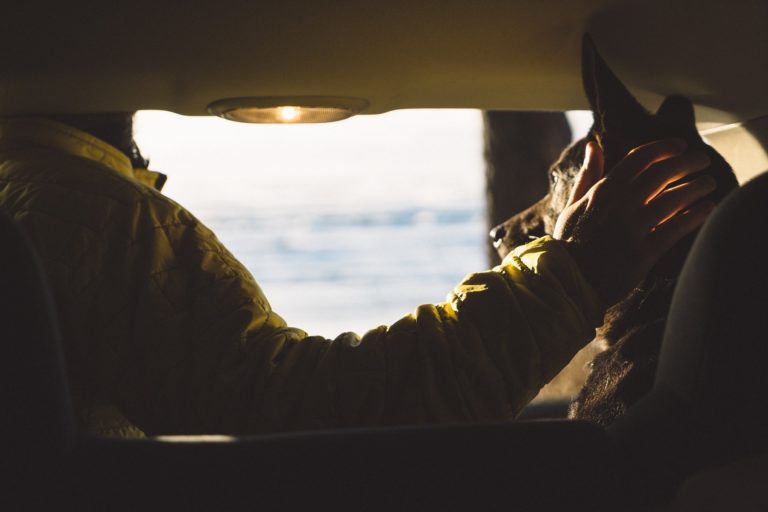
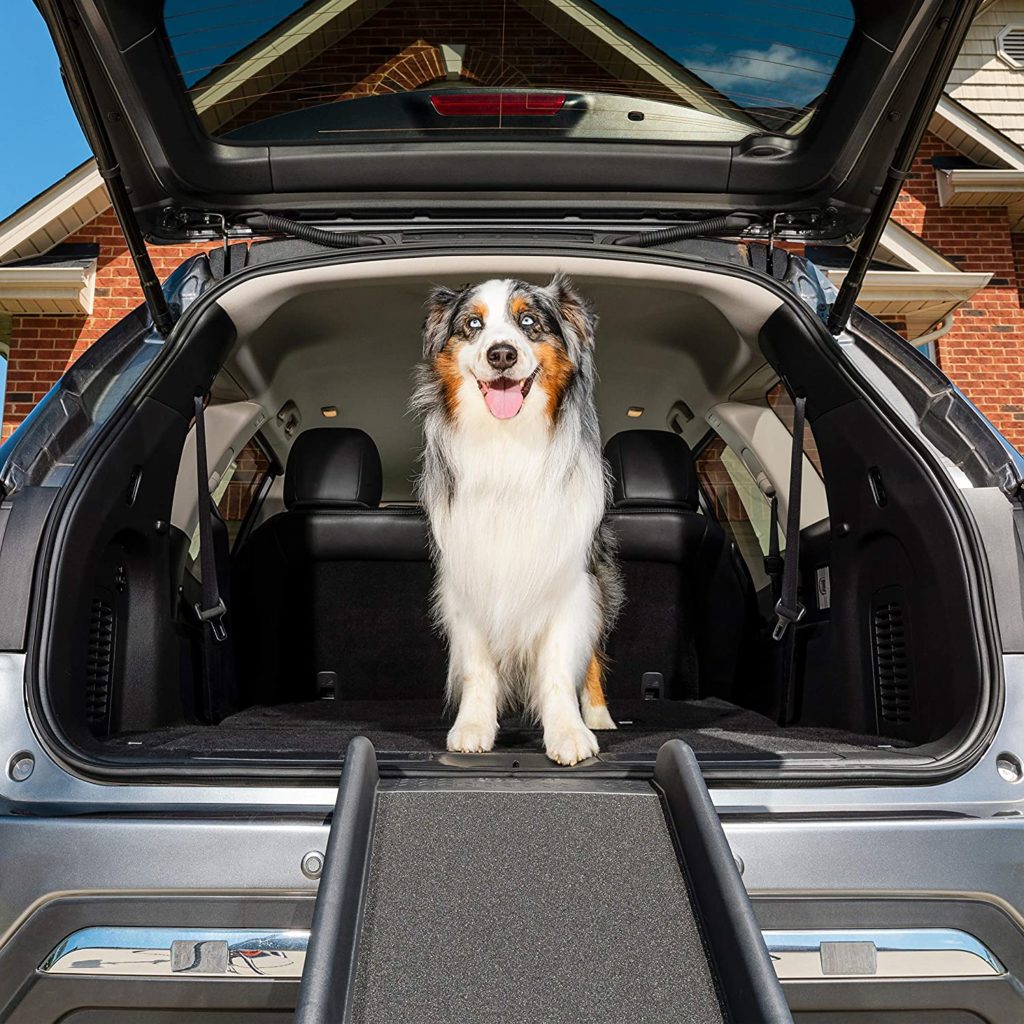
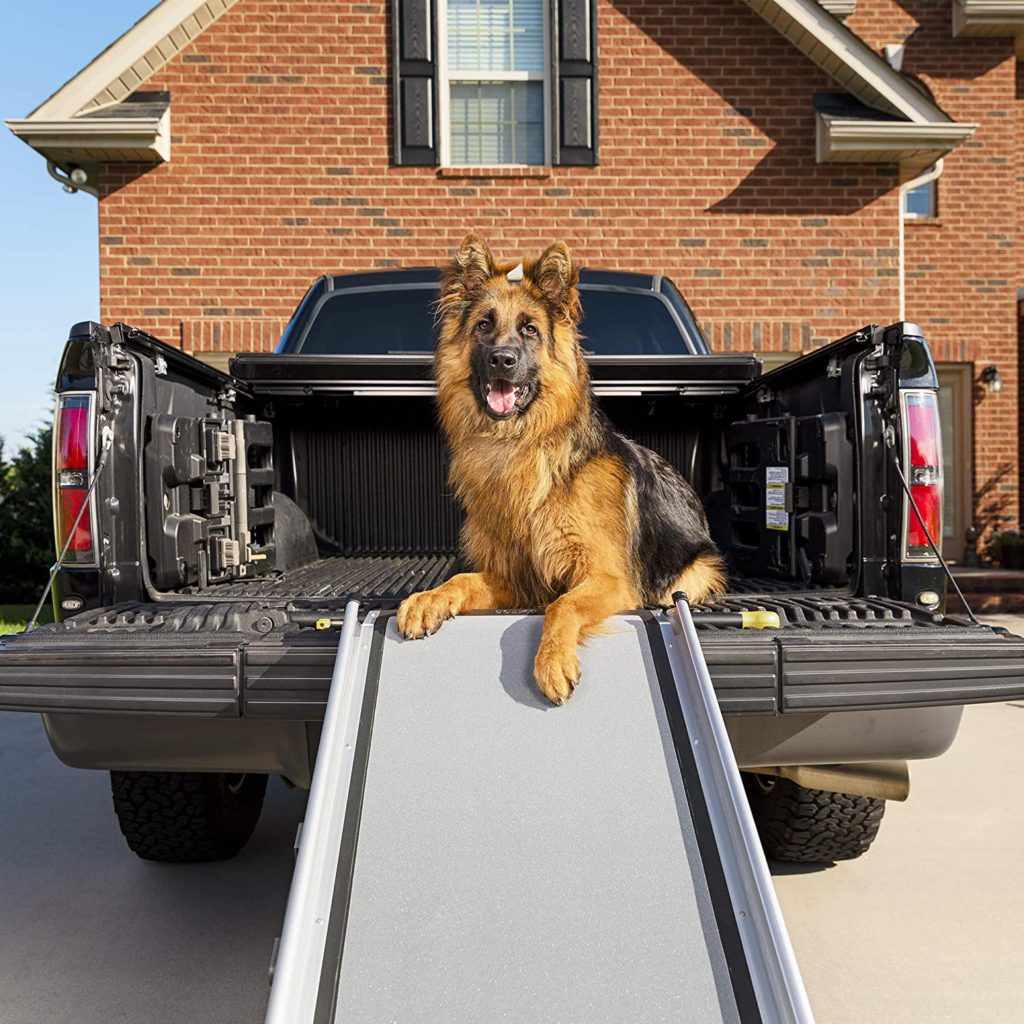
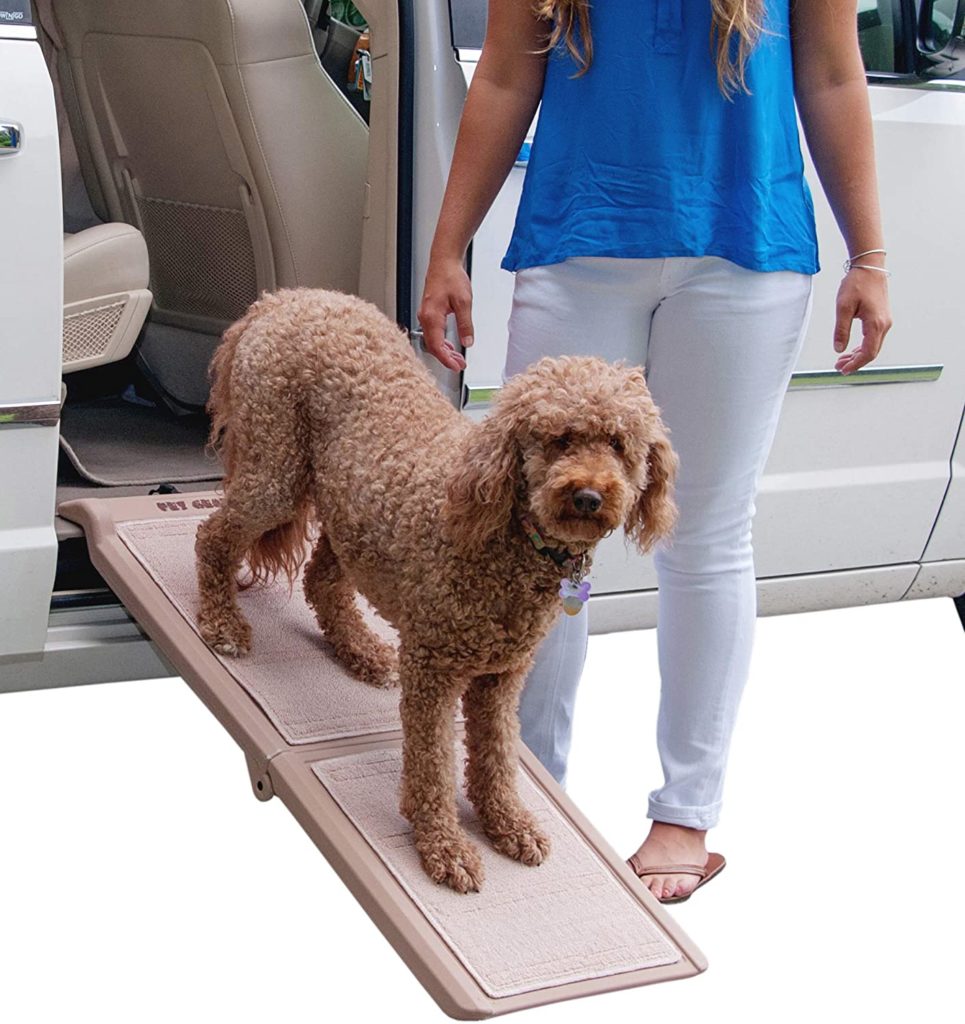
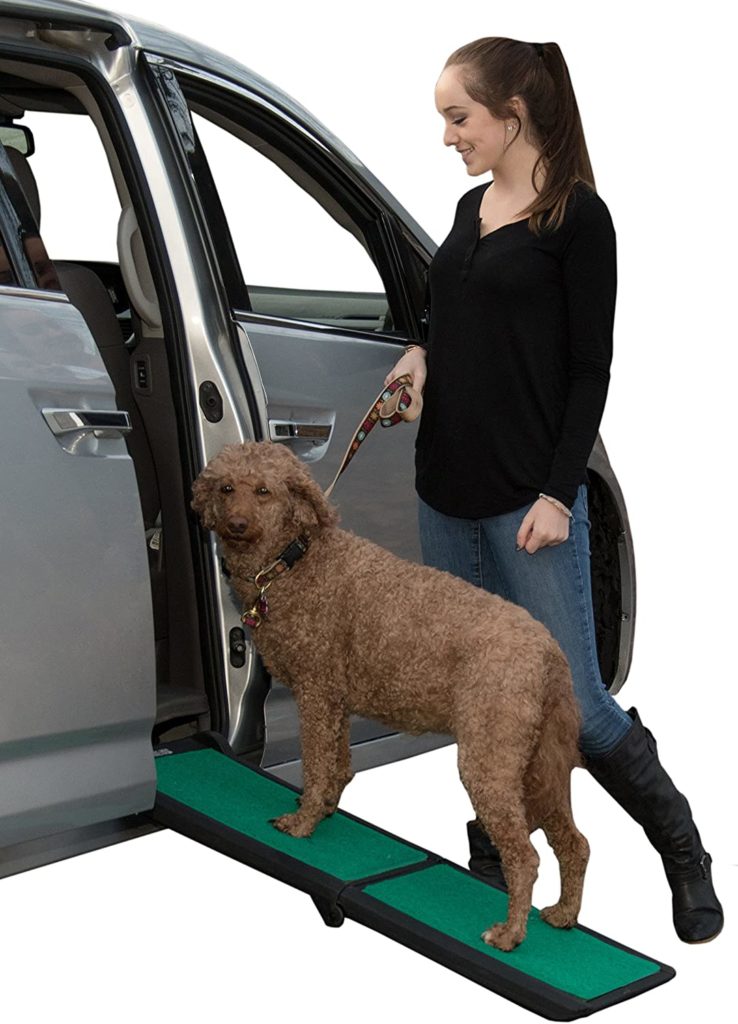
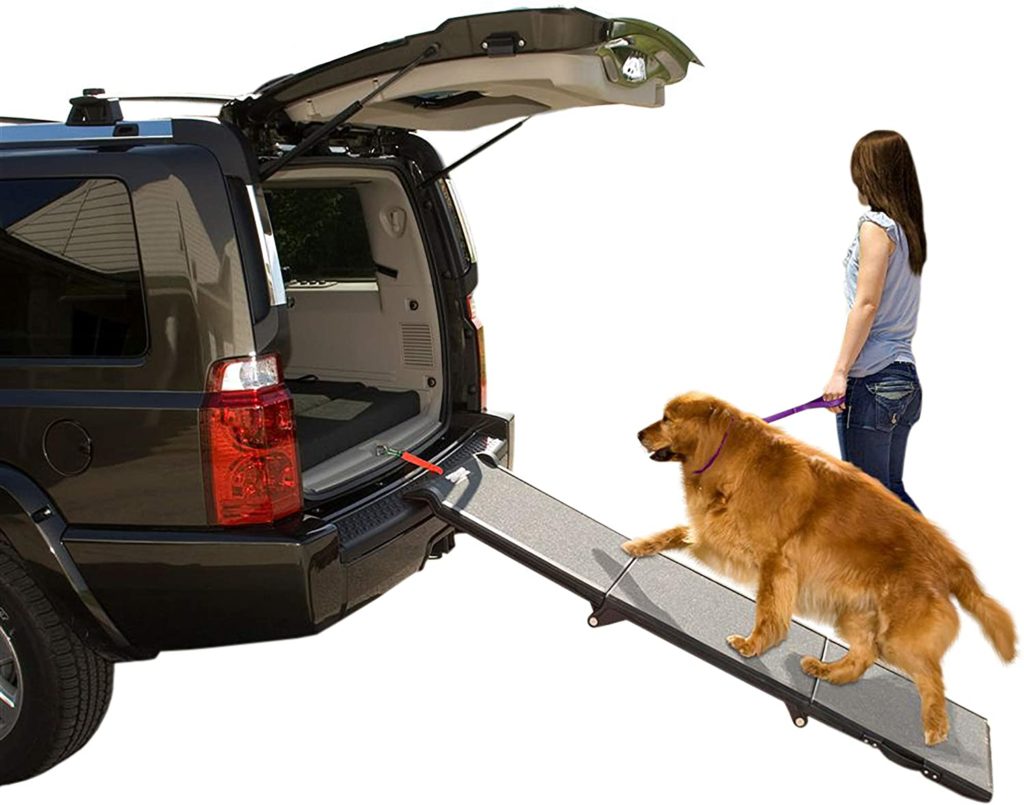
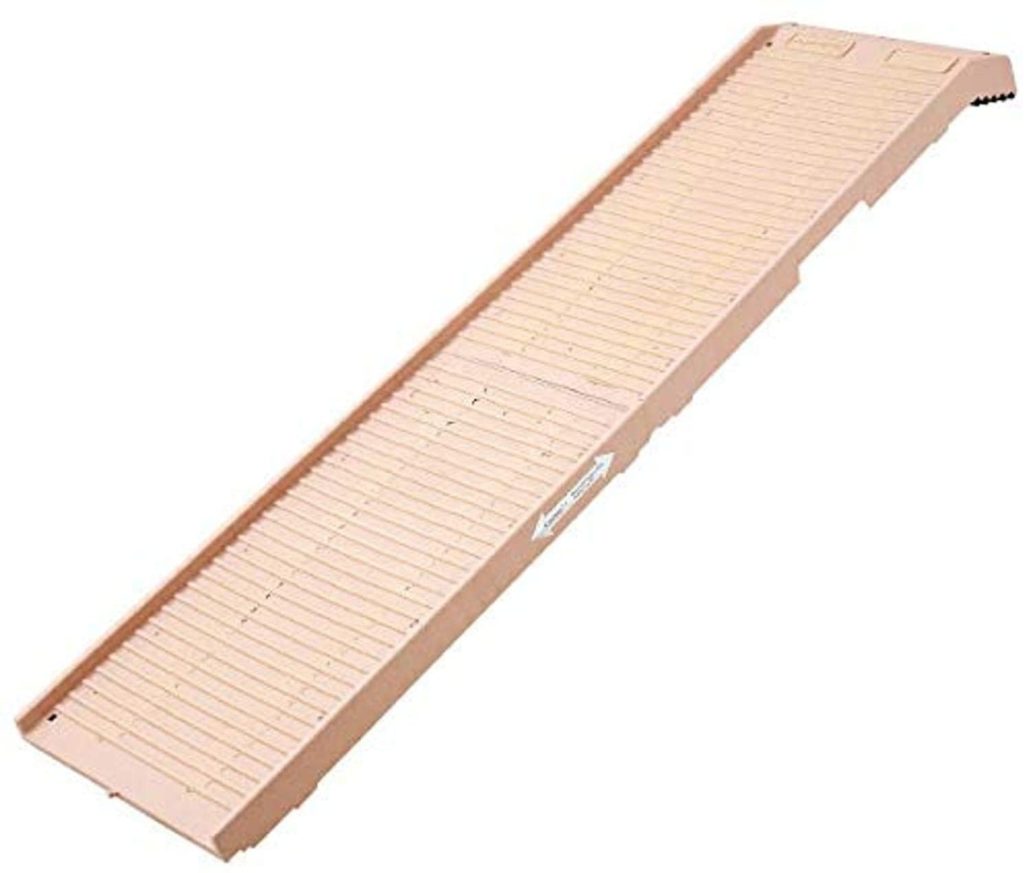
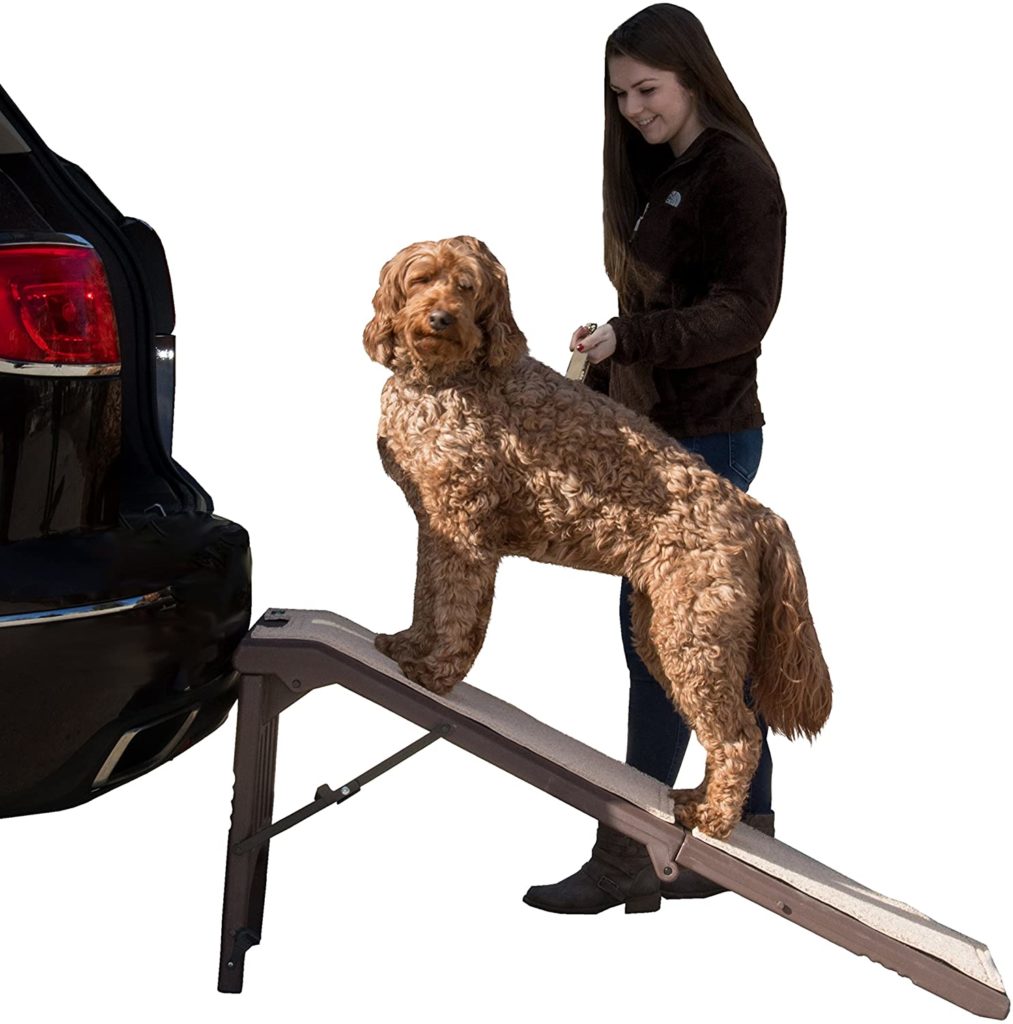
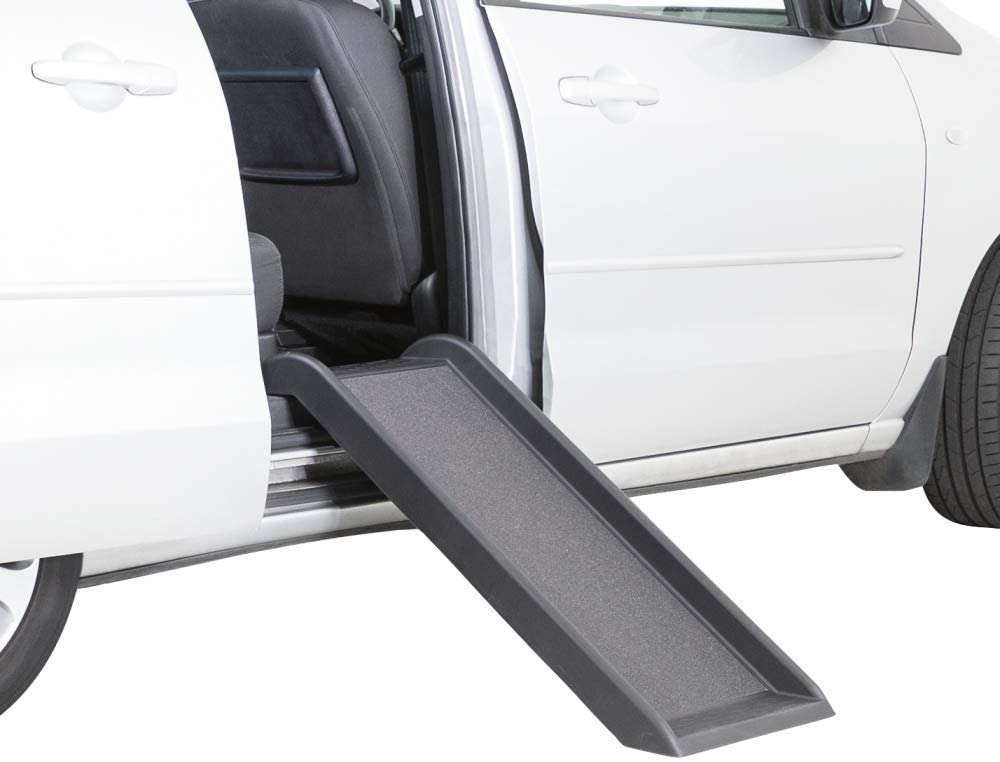




No comment yet, add your voice below!